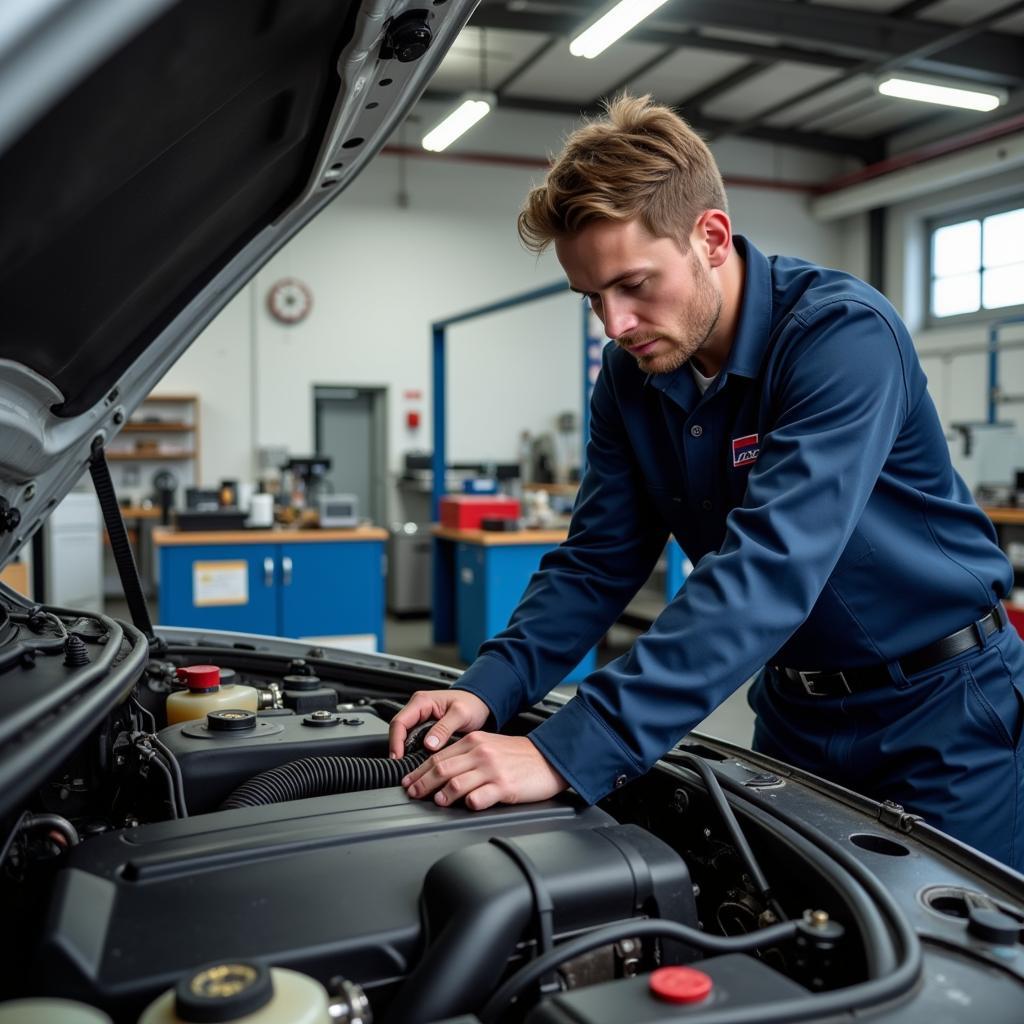“Where To Take My Car For Maintenance?” is a question every car owner asks at some point. Whether you’re experiencing car troubles or just need a routine oil change, finding a trustworthy mechanic can be a daunting task. This guide will equip you with the knowledge to make informed decisions about your car’s maintenance, ensuring its longevity and your peace of mind.
Factors to Consider When Choosing a Car Maintenance Provider
Before you hand over your car keys, consider these crucial factors:
- Reputation: Look for establishments with a proven track record. Online reviews, testimonials from friends and family, and ratings from organizations like the Better Business Bureau can offer valuable insights.
- Specialization: While some shops offer general maintenance, others specialize in specific makes and models or types of repairs. Aligning your car’s needs with the shop’s expertise can lead to more accurate diagnoses and effective solutions.
- Location and Convenience: Consider proximity to your home or workplace, operating hours, and whether they offer services like shuttle services or loaner cars for your convenience.
- Transparency and Communication: A trustworthy mechanic will clearly explain the repairs needed, provide a detailed estimate, and answer your questions patiently. They should also be upfront about potential costs and obtain your consent before proceeding with any work.
- Warranty: Inquire about warranties on both parts and labor. A solid warranty demonstrates the mechanic’s confidence in their work and provides you with recourse if issues arise later.
Different Types of Car Maintenance Providers
You have several options when seeking car maintenance:
- Dealerships: Dealerships specialize in your car’s make and employ factory-trained technicians. They often have access to the latest diagnostic tools and genuine parts. However, dealership services can be more expensive.
- Independent Mechanics: Independent shops offer a wider range of services and price points. They often provide more personalized attention and may be more willing to work with you on payment options. However, their expertise and access to specialized tools may vary.
- National Chains: National chains like Firestone, Midas, and Jiffy Lube offer standardized services and competitive pricing. They can be a convenient option for routine maintenance like oil changes and tire rotations. However, their focus on speed and efficiency may sometimes come at the expense of personalized attention.
Understanding Routine Car Maintenance
Regular car maintenance is essential for preventing costly repairs and ensuring your safety on the road. Here are some key maintenance tasks and their recommended intervals:
- Oil Change: Every 3,000-5,000 miles or as recommended by your car’s manufacturer. Regular oil changes lubricate the engine, reduce friction, and prevent premature wear.
- Tire Rotation: Every 5,000-7,000 miles to ensure even tire wear and prolong their lifespan.
- Brake Inspection: Every 15,000 miles or annually, or if you notice any unusual noises or vibrations when braking.
- Fluid Checks: Regularly check and top off essential fluids like coolant, brake fluid, power steering fluid, and windshield wiper fluid.
- Filter Replacements: Replace the air filter and cabin air filter every 12,000-15,000 miles or as needed.
DIY vs. Professional Car Maintenance:
While some car maintenance tasks can be handled by DIY enthusiasts, others are best left to the professionals.
DIY-Friendly Tasks:
- Checking and refilling fluids
- Replacing windshield wipers
- Changing air filters
- Jump-starting a battery
Tasks Best Left to Professionals:
- Engine and transmission work
- Brake repairs
- Electrical system diagnostics and repairs
- Anything involving complex systems or specialized tools
Attempting complex repairs yourself can lead to further damage and void your car’s warranty.
 Mechanic inspecting a car engine
Mechanic inspecting a car engine
Red Flags to Watch Out For
Be wary of mechanics who exhibit these red flags:
- Pressuring you into unnecessary repairs
- Providing vague or unclear explanations
- Refusing to provide a written estimate
- Having a history of complaints or negative reviews
Trust your instincts. If something feels off, don’t hesitate to get a second opinion.
Conclusion
Choosing the right place to take your car for maintenance is crucial. By considering factors like reputation, specialization, transparency, and your comfort level, you can make informed decisions that protect your investment and ensure your safety on the road.
Remember, proactive car maintenance is always better than reactive repairs.
Need help finding a trustworthy mechanic in your area? Contact AutoTipPro today at +1 (641) 206-8880 or visit our office at 500 N St Mary’s St, San Antonio, TX 78205, United States. Our team of experts can connect you with reputable service providers and answer any questions you may have.
FAQs
1. How often should I take my car for maintenance?
Refer to your car’s owner’s manual for manufacturer-recommended maintenance schedules. Generally, aim for an oil change every 3,000-5,000 miles and a comprehensive inspection annually.
2. What should I do if my car breaks down unexpectedly?
Stay calm, pull over to a safe location, turn on your hazard lights, and contact roadside assistance. Avoid attempting repairs yourself unless you’re confident in your abilities.
3. Can I negotiate the price of car repairs?
While some mechanics are open to negotiation, especially for extensive repairs, others may have fixed prices. It’s always worth asking for a discount or exploring payment options.
4. What should I do if I’m not satisfied with the repairs?
First, try to resolve the issue with the mechanic directly. If that fails, document the problem, gather any relevant paperwork, and consider filing a complaint with the Better Business Bureau or your local consumer protection agency.
5. How can I save money on car maintenance?
Consider learning some basic DIY tasks, shopping around for the best prices on parts and services, and taking advantage of discounts and coupons. Regular maintenance can also prevent costly repairs down the line.




Leave a Reply